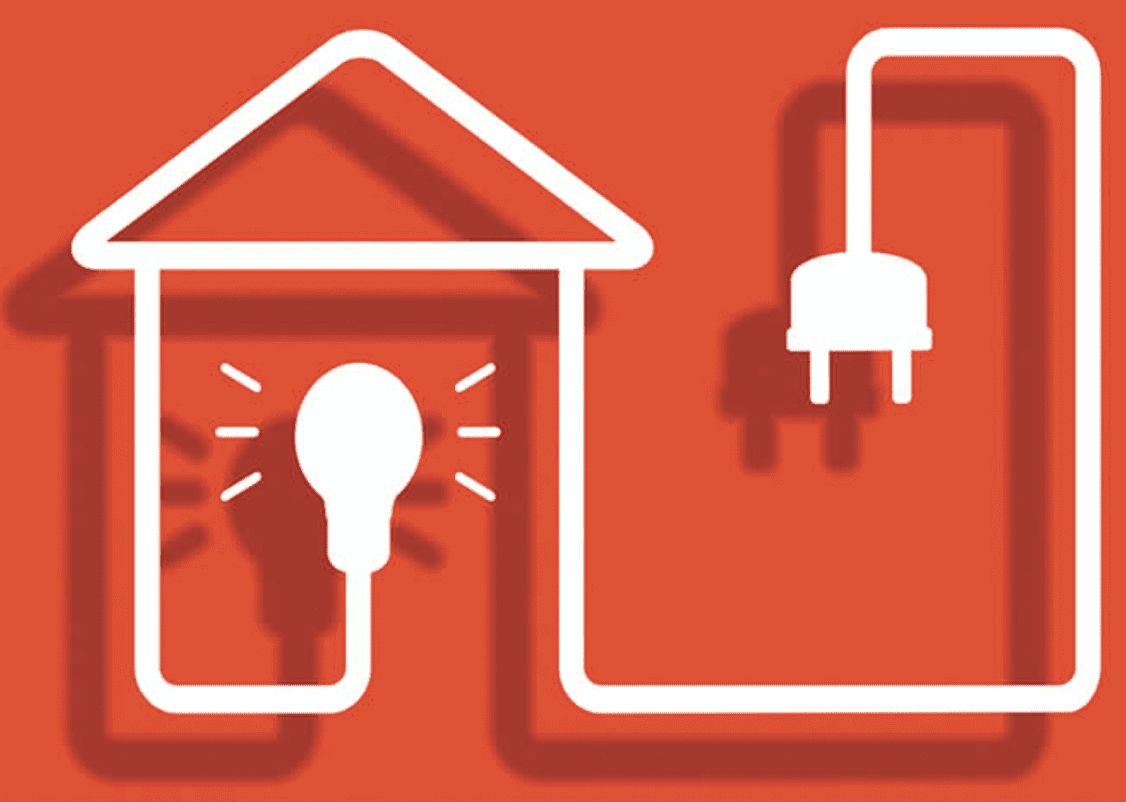The Regulatory Structures or Economic Opportunities that are Driving—or Hindering—Building Electrification

Although the electricity generation and transportation sectors account for a far greater share of greenhouse gas emissions than the residential and commercial building sector, policy makers are targeting building electrification as a means for making a significant contribution to economy-wide emission reductions. Federal, state, and local governments are using various policy levers toward this goal, creating risks for industries, such as natural gas distribution and real estate development, and opportunities for others, such as technology companies focused on smart homes and companies developing energy management systems, electric vehicle supply equipment, and heat pump equipment, and manufacturing and installation companies.
COMMENTARY
These initiatives include amendments to building code regulations and building performance standards, the establishment of electric vehicle infrastructure incentives, and even outright bans on new natural gas connections. Market pressures on the natural gas supply chain and increasing natural gas costs are further inducing commercial real estate developers, homeowners, and builders to embrace electrification as a cost-saving measure, which may well be far more motivating for some than the altruistic driver related to mitigation of climate disruption. However, legacy regulations may have an unforeseen effect of getting in the way of government initiatives.
Building Energy Code StandardsA basic policy lever that states have applied to drive building electrification is the building energy code for new construction. States may adopt building energy codes that meet or exceed the standardized building codes certified by the U.S. Department of Energy (DOE). The commercial building energy code is developed by the American Society of Heating, Refrigerating and Air-Conditioning Engineers (ASHRAE). Whenever this code is revised, DOE is required to certify that the code will improve energy efficiency, and when certified, states are required to certify that their codes meet or exceed the ASHRAE standard.
 Belton Zeigler
Belton ZeiglerSeparately, the International Code Council administers the International Energy Conservation Code (IECC) for residential buildings. While DOE is required to make a similar certification on changes to the IECC, states are not required to modify their residential codes to conform with IECC standards. Rather, states are required to certify that they have reviewed the provisions of their residential building code regarding energy efficiency, and made a determination as to whether it is appropriate for them to revise their code to meet or exceed the updated edition of the IECC. Most states do simply adopt revisions to the model IECC code, possibly with minor amendments. But, some states, like California, develop their own residential building standards pushing for changes beyond those proposed by IECC. While code changes in California must be cost-effective to be adopted, as the cost of renewables and other clean technologies come down, more measures are being added with each revision to cost-effectively reduce emissions from buildings.
As noted above, states and local governments are in a position to develop stretch codes" that build upon and strengthen ASHRAE and IECC codes. Such measures could include mandatory electrification of certain appliances and equipment, incorporating rooftop solar, the inclusion of electric vehicle charging, and net zero emissions building standards. By way of example, Washington State passed the first statewide all-electric construction requirement for commercial buildings on April 22 of this year. In 2020, California passed legislation that required all new homes to include rooftop solar and is considering a similar all-electric construction requirement to that which was passed in Washington within its 2022 building code update. What this means for Washington and possibly California residents is that new buildings may only utilize electric heating appliances for space and water, with no option to utilize natural gas. Because states have the option to develop these stretch codes, the path by which these building codes lead to new construction electrification will vary on a state-by-state basis.
Building Performance StandardsCities across the country are continuing to implement building performance standards, which ultimately are expected to push owners and operators towards building electrification. For example, in New York City the Building Energy and Emissions Limits law will regulate each building's emissions intensity, expressed in metric tons of carbon dioxide equivalent per square foot per year (tCO2e/sf/yr), starting on Jan. 1, 2024. At present, emissions caps are set for various types of buildings with building emissions calculated using the U.S. Environmental Protection Agency's Portfolio Manager tool. The caps decrease in 2030. The target emissions level will be no more than 0.0014 tCO2e/sf/yr by 2050 for all covered buildings. Building owners that fail to comply will be subject to civil penalties.
 Lisa RushtonNatural Gas Infrastructure Bans
Lisa RushtonNatural Gas Infrastructure BansSome municipalities have gone so far as to limit or ban the installation of new natural gas infrastructure in new building construction or major reconstruction, renovation, or repair as a way to drive building electrification. Whether local governments have the authority to take such actions depends on the extent of a state's regulation of building codes and natural gas services.
The City of Berkeley, California kicked off the movement by prohibiting, effective Jan. 1, 2020, construction of fuel gas piping, other than service pipe, in or in connection with a building, structure or within the property lines of premises, extending from the point of delivery at the gas meter" in newly constructed buildings." In response, the California Restaurant Association filed a complaint in federal court arguing that the Energy Policy and Conservation Act preempts all state regulations concerning" the energy efficiency or energy use of a variety of consumer and industrial products and that the ordinance requires appliances to use zero natural gas by banning gas piping inside buildings. The federal district court dismissed the complaint on the grounds that the ordinance does not directly regulate" the energy efficiency or energy use of appliances and that the Natural Gas Act expressly provides that local governments maintain control over local distribution of natural gas. The U.S. Court of Appeals for the Ninth Circuit heard oral arguments on May 12, 2022.
In other states, local bans on natural gas infrastructure may be in conflict with state regulation. For example, in 2019, the Town of Brookline, Massachusetts approved a by-law that would have prohibited construction permits for new buildings or significant rehabilitations that include installation of new on-site fossil fuel infrastructure" except under limited circumstances. In 2020, the Massachusetts Attorney General struck down the by-law as invalid, because it conflicted with (1) the state's uniform building code promulgated by the Board of Building Regulations and Standards, (2) uniform gas code regulations adopted by the Board of State Examiners of Plumbers and Gas Fitters, and (3) comprehensive regulation by the Department of Public Utilities of the distribution and sale of natural gas. Last year, the Town attempted to promulgate essentially the same by-law, this time allowing the issuance of a non-transferrable five-year special permit for the installation and continuation of any on-site fossil fuel infrastructure, subject to annual renewals. On February 22 of this year, the Massachusetts Attorney General rejected the by-law on the same grounds, adding that the provision also violated state law requiring uniform treatment of land under special permits.
 Jed Nosal
Jed NosalSince the enactment of the Berkeley ordinance, a number of other local governments in California also adopted natural gas prohibitions for new construction or significant renovation projects. Further, this trend is spreading to other major cities across the country, including New York City. In response, a number of states have enacted laws preventing local governments and other governmental entities from restricting the use of natural gas.
Here the debate begins-is it constitutionally appropriate for a state to ban or restrict the use of natural gas? And what level of government-federal, state, or local-should control the end use of natural gas? While many people believe that energy transition is an imperative and that we are facing an existential crisis when it comes to climate disruption, governmental agencies addressing the problem are wise to take action, but they cannot simply side step existing constitutional, legislative, and regulatory measures that exist in this country.
Transformation of Natural Gas Distribution UtilitiesOn the other hand, as noted earlier, market pressures throughout the natural gas supply chain may lead to building electrification as a de facto consequence of price escalation and supply shortages. Numerous local gas distribution companies (LDC) have announced new service moratoria as they are unable to add new customers due to supply constraints caused in part by the failure of gas transmission investment to keep up with demand and the inability to site new facilities. The Federal Energy Regulatory Commission (FERC) is in the process of reviewing its Policy Statement on the Certification of New Interstate Natural Gas Facilities. FERC has indicated that while precedent agreements between shippers and project applicants would remain evidence of the need for a project, they would not be the sole factor, and an applicant would have to provide more to show the need. FERC also issued a draft Policy Statement on its Consideration of Greenhouse Gas Emissions in Natural Gas Infrastructure Project Reviews, which would expand the scope of its review under the National Environmental Policy Act.
 Jesse Reyes
Jesse ReyesSeparately, LDCs are facing pressure under tightening state regulation of greenhouse gas emissions. Under some scenarios, LDCs may continue to play a role in energy delivery by introducing renewable natural gas and hydrogen into their systems, but under other scenarios, gas distribution service may cease to be available at the neighborhood level or even in entire service territories as gas infrastructure is decommissioned and not replaced.
Some state public utility commissions are reconsidering long-term natural gas infrastructure planning and the role of LDCs. Enabling the transition of the gas distribution industry will likely require changes in utility regulation. Assuming adequate gas supply, LDCs have an obligation to serve customers upon request in many states according to their approved line extension policies. They also have an obligation to maintain a safe and reliable system at just and reasonable rates. Some LDCs are being required to accelerate the replacement of all older, leak-prone pipes, but these long-term capital investments may run contrary to a transition away from gas service and result in stranded costs. As building electrification increases, gas throughput will decrease, resulting in higher rates paid by fewer customers. One California study suggests that in a high electrification scenario, gas delivery rates could increase by 80% by 2030 and 480% by 2050. This raises potential equity issues as the customers that remain taking gas distribution service likely will be those that are less able to financially fund a building electrification retrofit.
For this reason, the LDCs themselves may play an active role in building electrification as they manage the risks they face in the transition, such as avoiding stranded assets and potential inability to recover costs, and exploring new business models. Eversource Energy, for example, launched a networked geothermal heat pump pilot program in Framingham, Massachusetts in 2021 to study the feasibility of networked, utility-provided geothermal energy for providing heating and cooling to customers." Pacific Gas & Electric Company has recommended zonal decommissioning of services and mains once the affected customers are converted to electric appliances, and it has used electrification incentives as a means of cost effectively avoiding planned gas project costs. Of course, there remains the question whether LDCs may ultimately withdraw gas service depending on state laws and their obligation to provide gas service. There may also be issues related to land use and whether LDCs are authorized to cross public rights of way when installing facilities that are not gas pipeline equipment.
ConclusionQuestions about jurisdiction and the implications of our existing legal and regulatory system may well impede blanket efforts to electrify the country without legislative actions. However, change is upon us. And as federal, state, and local agencies continue to pull policy levers, and economic forces continue to come into play, there is no question at this point that this country will see an increase in the number of electrified buildings in the years to come. Progress, however, will vary by jurisdiction, leaving the nature of public utility regulation and the availability of state sanctioned electrification programs looking very different on a state-by-state basis.
-Belton Zeigler serves as Co-head of Womble Bond Dickinson's Energy and Natural Resources Sector and is Head of the Utilities Subsector. He can be reached at belton.zeigler@wbd-us.com. Lisa Rushton, partner at Womble Bond Dickinson, serves as Co-head of the firm's Energy and Natural Resources Sector and head of the firm's Renewable Energy Subsector. Lisa can be reached at lisa.rushton@wbd-us.com. Jed Nosal is a partner in Womble Bond Dickinson's Business Litigation Practice Group. Jed can be reached at jed.nosal@wbd-us.com. Jesse Reyes is Senior Counsel in Womble Bond Dickinson's Energy and Natural Resources sector. Jesse can be reached at jesse.reyes@wbd-us.com.
The post The Regulatory Structures or Economic Opportunities that are Driving-or Hindering-Building Electrification appeared first on POWER Magazine.